Hi guys, this is Nikki Lead Veterinary Technician with Posh Dog Knee Braces, and today let’s discuss how many hours a day your dog should wear a knee brace. Now this also really depends on what we are treating. If we have a full CCL tear with meniscus involvement, I may suggest you use the brace more often than a patient with a partial tear.
Also, how much energy your dog has is a big factor on how many hours you really need to be using the brace. Some brace companies say wear the brace all day long, with no breaks. This can lead to a lot of problems initially, if you have not properly broken in the wearing time of your brace.
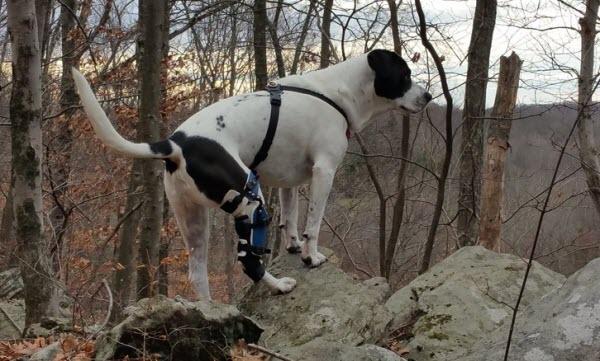
If you have a high energy dog, one that dives off of stairs and furniture, and is harder to control, you may be advised to use the brace a bit more. Now, we only suggest using braces during times that your dog is supervised. This is a medical device, and should not be worn without direct supervision. I would suggest starting out slow, just using the brace during walks and activities hours your veterinary technician will go over with you. Once your dog has been using the brace well, and you feel more confident, you can begin to increase the amount of time (hours) your dog uses the brace.
I still like to give breaks during the day, especially if there is a time they like to lay down and nap. For instance, using the brace for 2 to 3 hours in the morning, while they get the wiggles out, go potty, walk, and breakfast is perfectly fine. You may then opt to remove the brace during lunchtime, as most dogs calm down around this time. Then, you can place the brace back on in the afternoon, and remove prior to going to bed. This is just a suggested scenario, but again you do need to continue monitoring them with the brace.
We do not suggest any patient to wear the brace 8-12 hours a day, as anything that is worn that long on human or dog can cause skin irritation.
If your dog is pretty chill, relaxed, and only really active outside (such as giant breeds), then I would suggest using the brace just for activities. These can include walks, car rides, when someone comes to visit, playing with another dog, stairs, ect. If they spend most of their time laying down, it would not be comfortable to leave a brace on all day long. Let them get cozy, but we will be suggesting some Physical therapy activities to help prevent atrophy.
Put a sign outside your door, this will help discourage people from ringing the doorbell or knocking. Most dogs react to hearing a knock and doorbell, so if we can cut back on those times that will really help with preventing re-injury. Instead, put your phone number on the sign, so they can text you if someone arrives to visit.
Always feel free to speak to your service veterinary technician with any questions, that is what we are here for! Thank you, and give your dog a big hug for us!
You can contact us via our contact page or visit our Facebook page for more information.
Let Your Dog Recover With Our Custom Dog Knee Brace!
We’ve Helped Dogs All Around The World, Now We Want To Help Yours…
The Posh Dog Knee Brace is a 100% custom Dog knee brace, hand made only for your Dog. We make our custom brace with no casting. Our state-of-the-art brace for Dogs is very durable, waterproof, sand proof, and easily adjustable by customers. Our Veterinary Technicians provide personal live video supervision of measuring, and fitting of your Dog ACL brace in the comfort of your own home.
Dogs can be prone to injuries related to various physical activities. Understanding the types of injuries associated with specific activities can help dog owners take preventive measures and seek appropriate veterinary care when needed. Here are common activity-related dog injuries:
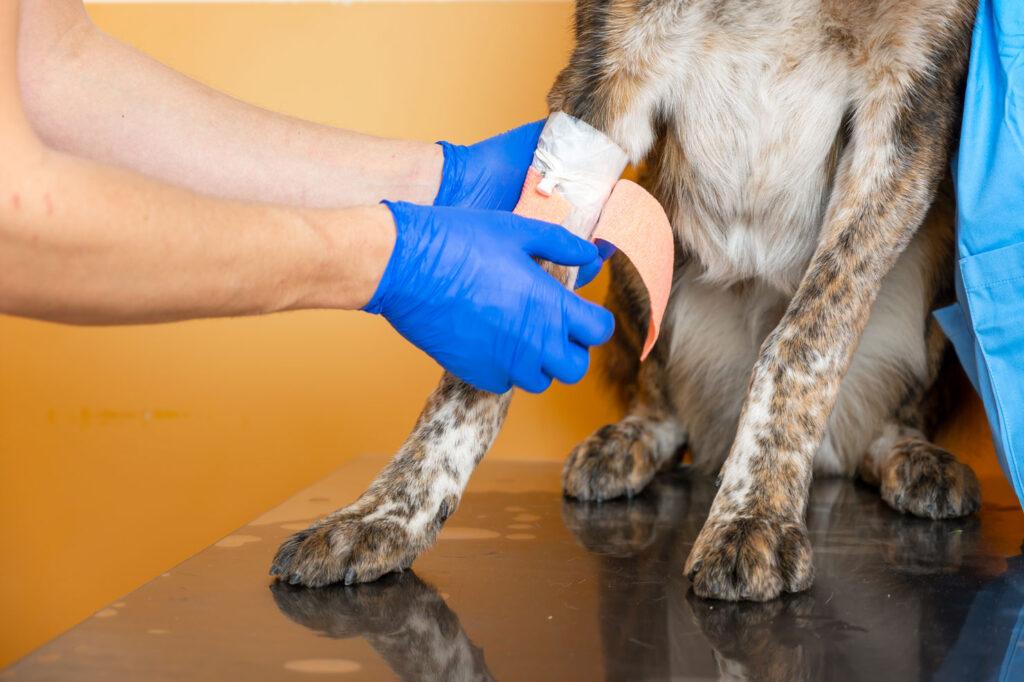
Preventing activity-related injuries involves being mindful of your dog’s limitations, ensuring they are adequately conditioned for the activity, and providing proper warm-up and cool-down periods. Regular veterinary check-ups can help detect and address any underlying health issues that might predispose a dog to injuries during physical activities. If an injury occurs, prompt veterinary attention is essential to ensure proper diagnosis and treatment.
For more information about related injuries or if you would like information about our brace contact us via our contact form or visit our Facebook page.
Christmas gifts for dogs are great for several reasons:
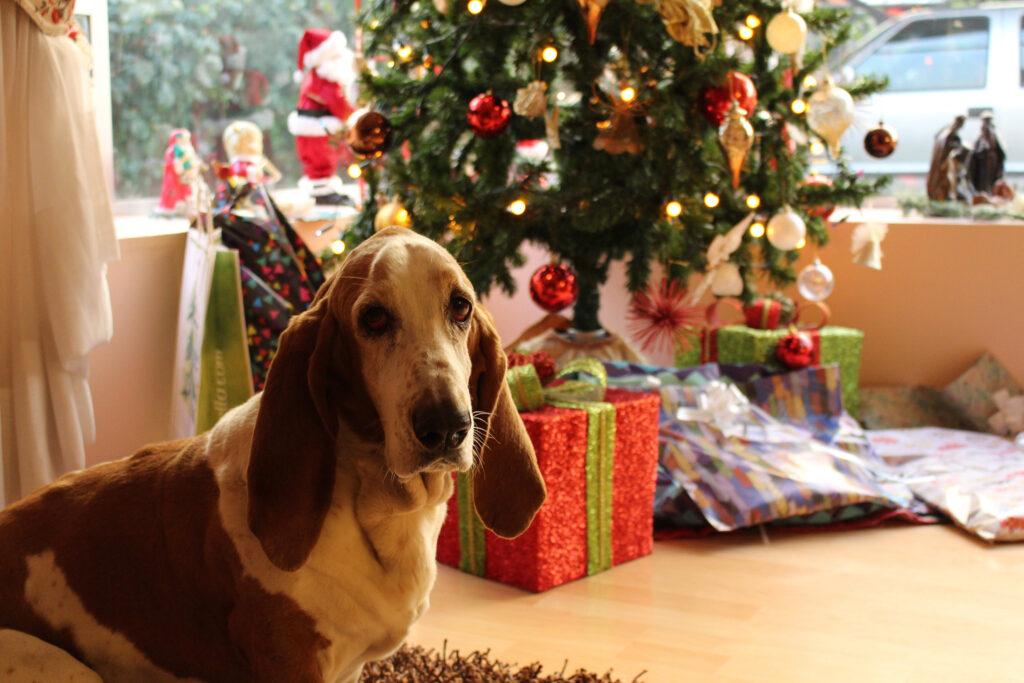
1. Joyful Surprise: Dogs, like humans, appreciate surprises and new experiences. Christmas gifts can bring excitement and joy to their lives.
2. Bonding Opportunity: Choosing and giving a gift to your dog can strengthen the bond between pet and owner. It’s a shared experience that fosters a sense of connection.
3. Enrichment and Stimulation: Many dog gifts, such as interactive toys or puzzle feeders, provide mental and physical stimulation. These contribute to a dog’s overall well-being and happiness.
4. Seasonal Festivity: Including dogs in holiday celebrations adds a festive and inclusive atmosphere to the household. Special gifts make them feel like a part of the family’s joyous occasions.
5. Practical Benefits: Some Christmas gifts, like cozy beds or grooming tools, offer practical benefits by enhancing the dog’s comfort, health, or grooming routine.
6. Expressing Love and Care: Gifting a dog something special shows love and care. It’s a way for owners to express gratitude for the companionship and joy their furry friends bring to their lives.
7. Creating Memories: The act of giving and receiving gifts during the holiday season creates lasting memories. It becomes a part of the shared history between the dog and its family.
8. Fulfilling Needs: Christmas gifts can address specific needs or preferences of the dog, whether it’s a new chew toy, a cozy blanket, or tasty treats.
1. Personalized dog tags: Adds a personal touch while ensuring pet safety.
2. Interactive treat-dispensing toys: Keeps pets mentally stimulated and entertained.
3. Cozy pet bed with memory foam: Provides comfort and supports joint health.
4. Customized pet portrait: A unique and sentimental keepsake for pet parents.
5. Pet subscription box: Offers a variety of treats, toys, and accessories regularly.
6. GPS pet tracker: Ensures peace of mind by helping locate pets if they wander.
7. Pet-friendly spa day: A pampering experience for both pets and their owners.
8. High-quality pet food or treats: Shows care for the pet’s well-being and health.
9. Pet DNA testing kit: Provides insights into the pet’s breed and health history.
10. Stylish pet apparel: Adds a fun and fashionable element to pet ownership.
11. Pet camera with treat dispenser: Allows interaction and monitoring remotely.
12. Elevated food and water bowls: Enhances comfort and reduces strain on pets’ necks.
13. Pet grooming kit: Useful for regular grooming sessions, fostering a bond.
14. Pet-friendly puzzle games: Mental stimulation and a fun bonding activity.
15. Automatic pet feeder: Convenient for pet parents and ensures timely meals.
16. Pet-friendly holiday advent calendar: Adds excitement to holiday celebrations.
17. Pet massage or acupuncture session: Promotes relaxation and well-being.
18. Pet-friendly tech gadgets: Fun and innovative devices for tech-savvy pet parents.
19. Pet first aid kit: Essential for handling minor injuries or emergencies.
20. Comfy pet blanket or throw: Provides warmth and a cozy spot for pets.
21. Pet-friendly travel accessories: Useful for pet parents who love to travel with their companions.
22. Pet-friendly subscription service (e.g., toys, treats): A continuous supply of goodies.
23. Pet training classes or sessions: Enhances the bond between pets and owners.
24. Pet-friendly fitness tracker: Encourages an active lifestyle for both pets and owners.
In summary, Christmas gifts for dogs contribute to the overall well-being, happiness, and shared experiences between pets and their owners, making the holiday season more memorable and enjoyable for everyone involved.
If you were interested in one of our products or have questions you can contact us via our contact form or visit us on Facebook page.
Dogs are drawn to squeaky toys because of their natural instincts and behaviors, which the toys trigger and reinforce. There are several reasons why dogs are fond of squeaky toys:

There are various types of dog toys designed to cater to different play styles and preferences. Here are some common types:
It’s important to note that not all dogs are interested in squeaky toys, and individual preferences can vary. Additionally, some dogs may be overstimulated or become obsessive with squeaky toys, leading to potential behavior problems or compulsive chewing. As with any toy, it’s essential to supervise your dog while playing and ensure that the toy is safe and appropriate for their size and chewing habits.
If your dog enjoys squeaky toys, they can be a fun and engaging way to provide mental stimulation and interactive play. However, always consider your dog’s preferences, safety, and play style when choosing toys to keep them entertained and happy.
For more information about our Posh Dog Knee Brace you can contact us via or contact form or if you would like to follow us on Facebook click here.
The amount of exercise a dog needs can vary depending on factors such as their breed, age, size, and overall health. However, most dogs require a combination of physical and mental exercise to stay healthy and happy. Here are some general guidelines for the amount of exercise dogs need based on their life stage:
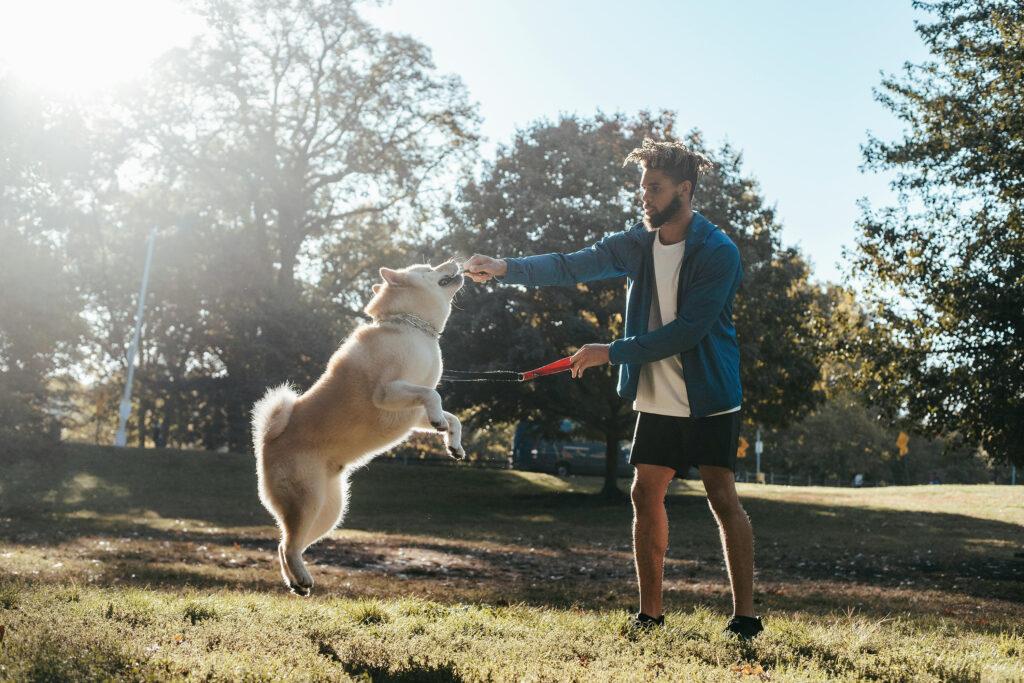
Puppies: Puppies have boundless energy and need frequent, short bursts of play and activity throughout the day. As they grow, their activity can gradually increase. Aim for a total of 30 minutes to 2 hours of exercise daily, spread across several short play sessions.
Adult Dogs: Adult dogs generally require around 30 minutes to 2 hours of exercise each day, depending on their breed and activity level. Breeds with high energy levels, such as Border Collies or Retrievers, may need closer to 1-2 hours of activity daily, while smaller or less active breeds may be content with 30 minutes to an hour.
Senior Dogs: Older dogs may have reduced energy levels and mobility, but they still benefit from regular exercise. Lighter and shorter exercise sessions are more appropriate for seniors, typically around 30 minutes per day. Keep in mind that senior dogs may need more frequent breaks and slower-paced walks.
In addition to physical exercise, mental stimulation is crucial for all dogs, regardless of age. Mental exercises, such as puzzle toys, training sessions, and interactive games, help keep their minds sharp and prevent boredom.
Remember that these are general guidelines, and individual dogs may have different needs. It’s essential to observe your dog’s behavior and adjust their exercise routine accordingly. Some signs that your dog may need more exercise include restlessness, excessive barking, destructive behavior, or weight gain. On the other hand, if your dog appears tired, lethargic, or is experiencing difficulty exercising, consider reducing the intensity or duration of their activities.
If you have any questions you can contact us via our contact page or visit our Facebook page for more information.
When preparing homemade dog food, it’s essential to include a balanced combination of ingredients that provide the necessary nutrients for your dog’s health and well-being. Here are three essential foods for dogs that you can incorporate into homemade dog food recipes:
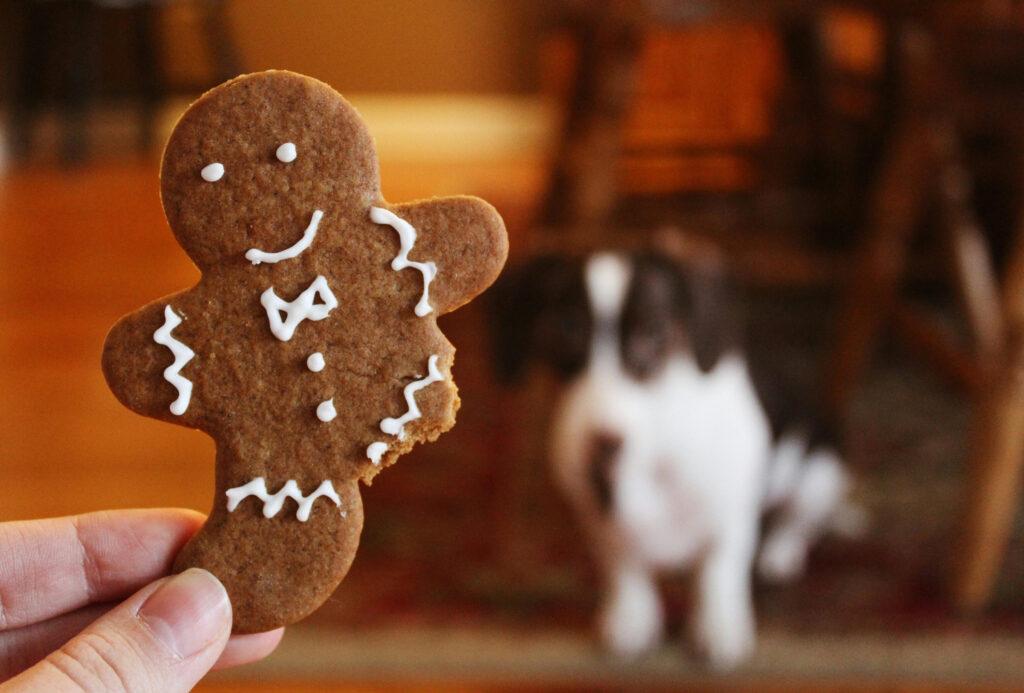
raisins, chocolate, and certain artificial sweeteners like xylitol. Always consult with your veterinarian to ensure that the homemade dog food recipe meets your dog’s specific nutritional requirements, taking into account their age, size, breed, and any health conditions they may have.
Keep in mind that homemade dog food should be properly balanced and varied to provide a complete and nutritionally adequate diet. A qualified veterinary nutritionist can help you create a balanced homemade diet plan tailored to your dog’s individual needs and preferences.
If you are interested in one of our products you can check out our Shopping Page, if you would like to join our Facebook page click here.
For dogs to maintain their physical and mental health, regular dog exercise is crucial. To avoid injuries, it’s important to select workouts that are suitable for your dog’s age, breed, size, and degree of fitness. The following canine workouts and injury prevention advice:
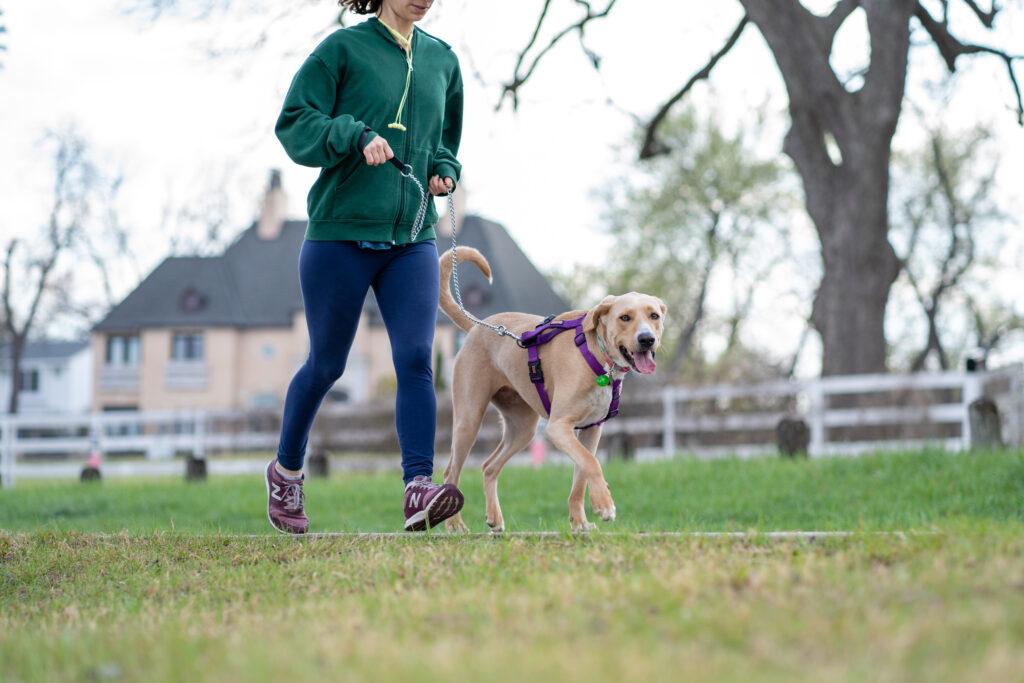
If you are interested in more information you can contact us via our contact page or visit our Facebook page.
When looking to buy therapeutic-quality essential oils for dogs, it’s essential to be cautious and choose products that are safe and suitable for canine use. Here are some tips to help you identify and purchase high-quality essential oils for your furry friend:
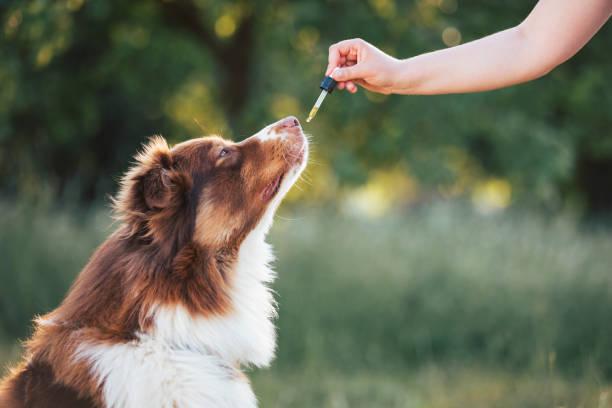
Remember that each dog is unique, and what works well for one dog may not be suitable for another. Always prioritize your dog’s safety and well-being, and seek professional advice if you have any doubts about using essential oils for your canine companion.
If you are interested in a Posh Dog Knee Brace you can contact us via our form or visit our Facebook Page.
Hey guys, this is Nikki Lead Veterinary Technician with Posh Dog Knee Braces. Today let’s talk about exercise in our cute little furry babies that we all love! Puppies are so cute, running around with those giant feet that don’t seem to match their bodies. Have you noticed how puppies tend to be very clumsy? Always falling over, tripping, slipping on hard surfaces? We think it is cute, but did you know there is a reason? Let’s talk about that today.
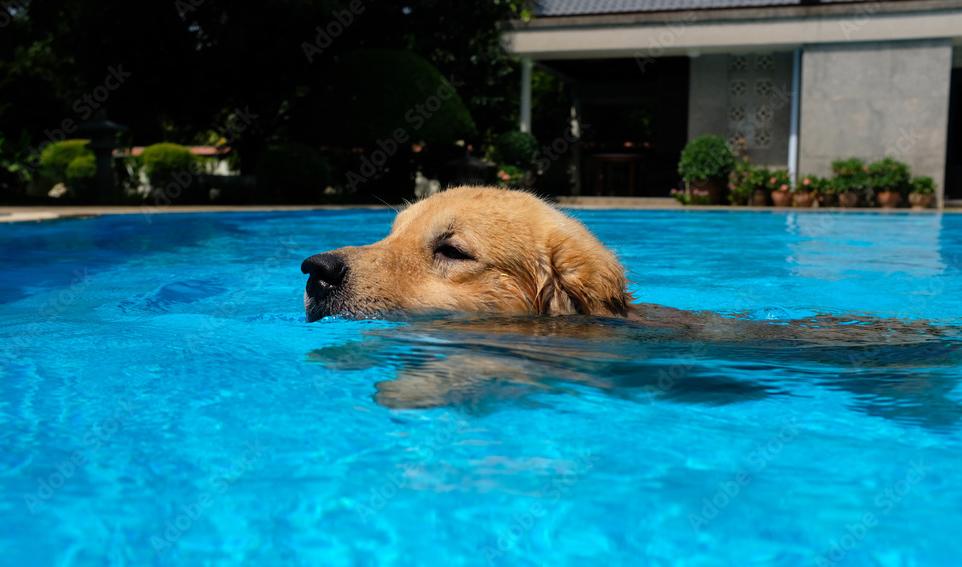
Did you know that a puppies bones do not even touch when you bring home that cute little 8 week old puppy? Their little joints are made of muscle, tendons, and ligaments with skin covering. Nothing is fitting tightly like a true socket. It can take 4-6 months for the joints to start developing, and 8 months and up for those growth plates to start to fuse. Some large breeds take 15+ months for their growth plates to finish. What does this mean?
This means that we have to be very careful as to not run a young dog excessively. This means restricting and supervising your puppy’s exercise, to stop them from being over-active. Each time they have a big jump, or an excessive run, this causes impacts between the bones. In a reasonable amount this is not a big deal, and is completely normal play. However, if you are letting your puppy jump up and down off furniture, taking them on long walks and hikes, you can potentially be damaging those forming joints, and this could cost you in the near future.
You see that puppy scrambling on the tile with no traction, and think it is a funny tik tok video, right? This is actually damaging their joints. Puppies need traction. Sliding into things, and scrambling, is not normal for a dog. Think about their wild ancestors, do you think their pups are walking on tile and sliding all the time? Nope! Neither should our pups. Every time that pup does the splits, you risk tearing the tendons in the hip. These can not be fixed.
There are far too many puppies having an FHO (where they have to remove the femoral head) due to slipping on surfaces. Either get your puppy toe grips, or have runners all over for them not to slip and slide.
You only have one chance to let your puppy grow in a healthy way. Once grown, you will have a lifetime to spend playing and engaging them, showing them, doing activities. So, keep it calm while they are still growing, engage them in fun safe activities. Taking them to puppy school is a great way to bond and get the wiggles out. Teach them commands and how to walk on a leash.
Puppies who are much to active have much higher chance of developing osteoarthritis, ligament tears like the CCL, patella issues, hip injuries and issues, and much more. I am not saying you can’t play with your puppy, but taking a 4 month old on a mountain hike is too much. Learn about what they should be developmentally doing at this age. Ask your Veterinarian or staff for help. Feel free to email us with any questions, we give free consults you can contact us via contact form on our website or visit our Facebook Page for more information.
Improve his life and yours with our custom crafted dog knee brace. It’s much more effective than a ready to wear or a soft dog ccl brace.Order yours today at Posh Dog Knee Brace or call us at 509-412-3065.
Finding relief for arthritis in dogs involves a combination of veterinary care, lifestyle adjustments, and supportive therapies. Arthritis is a degenerative joint disease that causes pain and inflammation in the joints, and it is common in senior dogs and large breeds. Here are some ways to help relieve arthritis in dogs:
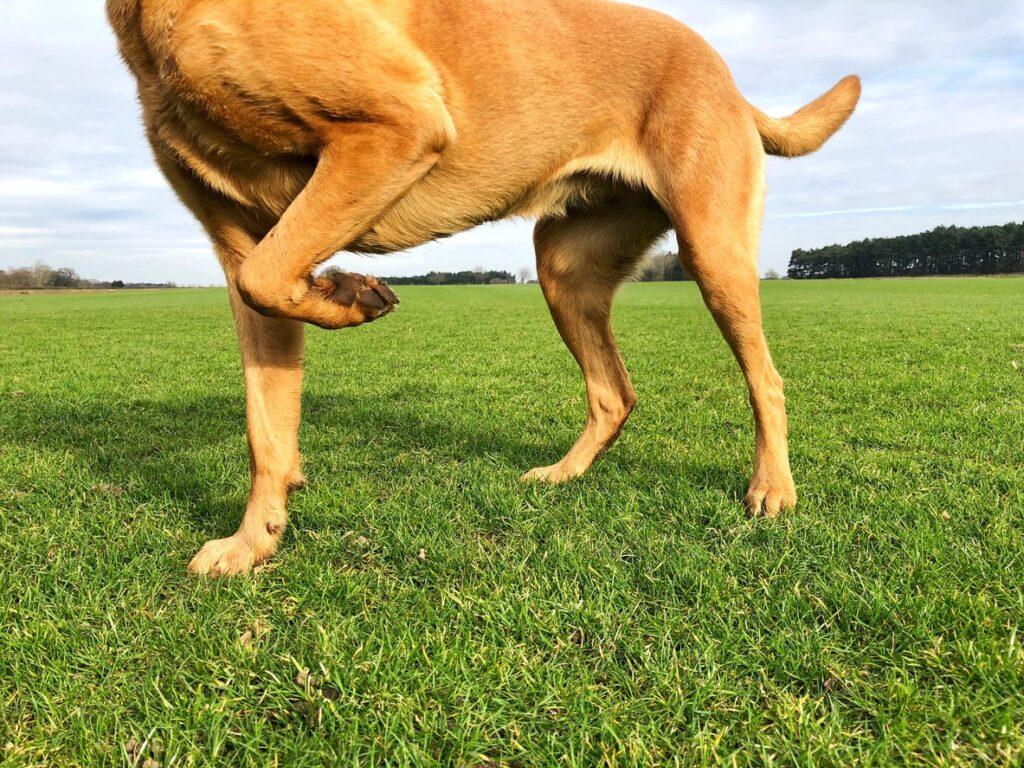
Remember that arthritis is a chronic condition, and while these measures can provide relief and improve your dog’s comfort, there is no cure for arthritis. Regular veterinary check-ups and ongoing management are essential to support your dog’s well-being and manage the progression of the disease. If you would like more information about our Posh Dog Knee Brace contact us via are contact page or visit our Facebook page.
There are many advantages to hand-feed your dog or puppy, and there are only a few circumstances in which it’s not a good idea.
Many dog trainers hand-feed their dogs their meals throughout the day rather than feeding them from a bowl for the most of the day. Every encounter with a dog is a chance to train them. Along with catching your dog in the act of being good, setting aside a portion (or all!) of your dog’s morning and evening meals and hand delivering that food as needed throughout the day will help you increase your rate of reinforcement and create value for the behaviors you want to see more of. A puppy can continuously practice basic behaviors like sit, down, wait, come, and other polite expressions by being hand-fed.
Additionally, hand-feeding for a while can assist raise the dog’s attention on you as the handler by linking you with meals and feeding, which can help dogs who are usually confident but who have many interests, of which you are just one, or dogs who are easily distracted, pay more attention to you.
Hand-feeding can enable you and a new dog or dog and a new person in your life get to know one another.
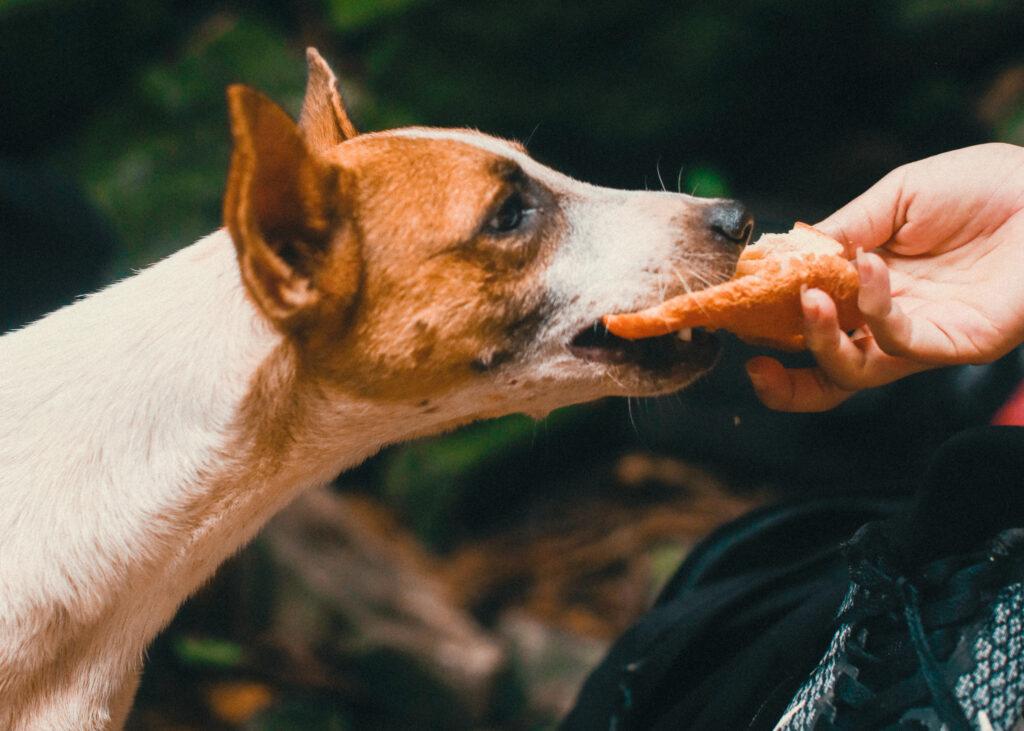
While hand-feeding a dog can help build a relationship with them, it can also increase stress if the dog is extremely timid or scared. Similar to people, some individuals would try to bribe a timid dog with food or treats to make him more comfortable among strangers. However, what frequently occurs (especially with dogs who really enjoy food) is that the allure of the food temporarily overrides their unease about the person – but only for as long as it takes to grab the food. The intention is for the dog to associate the presence of the “scary person” (“Yikes!”) with the presence of the food (“Yum!”).
They immediately realize the “scary person” is too close for comfort once the meal is in their mouth. In this instance, the food serves less as a tool to assist in changing the dog’s relationship and more as a trap.
When dealing with the “strangers are scary” issue, it is preferable for the owner to provide meals while the “scary person” is visible but sufficiently enough away to not raise any serious concerns. If you’re trying to bond with a dog who is really timid, adopt a similar strategy by staying close enough to him so that he identifies your presence with the food, but not so close that it requires a lot of bravery (or desperation) to eat it.
Hand-feeding certain dogs may make them more reckless with food. In an effort to acquire the food, many dogs become too excited and may jump up or lunge at their owners’ hands. Asking your dog to sit while you hold a piece of cheap food in your open palm will assist you teach impulse control in this situation. Try to bring your palm up near your dog. If he approaches the meal, clench your fist and, if necessary, ask him to sit down once more. Use your opposite hand to carry food to your dog’s mouth and command him to “take it!” as soon as he can control himself as your food hand approaches.
For some dogs, “self-control” will look differently. In the beginning, self-control may require a dog who is very excited to maintain a sit position for two seconds with your open hand 12 inches above her head. If your dog has a tendency to leap up on you when you are holding food, tether her with a leash to a solid object and stand just beyond the end of the leash. Your dog will eventually figure out that being patient in the vicinity of the food is the fastest way to receive it.
Try these suggestions if your dog bites down on food from your hand too forcefully.
A dog may become averse to eating from a dish in specific situations if it is fed by hand frequently. A little “tough love” could be necessary in such circumstances. Give your dog five minutes to finish his meal after placing it in a bowl. Attempt again later if he doesn’t, then take up the bowl. When food is present, a healthy dog won’t starve himself, even if using this method necessitates skipping a few meals while he waits to see if you’ll resume hand feeding.
If you are interested in a Posh Dog Knee Brace or have any questions about our braces you can contact via our contact page or visit our Facebook Page for more information.
When traveling in your car with your dog, restrain him with a safety harness and seat belt, or confine him to a properly secured crate. Also, avoid letting your dog sit on your lap or drive with his head out the window.
Most of us enjoy traveling with our dogs. And in most cases, this entails transporting them in our car, truck, or SUV. Yet, poor driving habits can turn a simple journey into a trip that changes your life. Both canine and human passengers must adhere to good driving safety. Dogs injured in cars due to poor safety precautions are a common occurrence among emergency veterinarians. This applies to situations where passengers are not properly restrained, such as sitting on the driver’s lap or sticking their heads out the window.
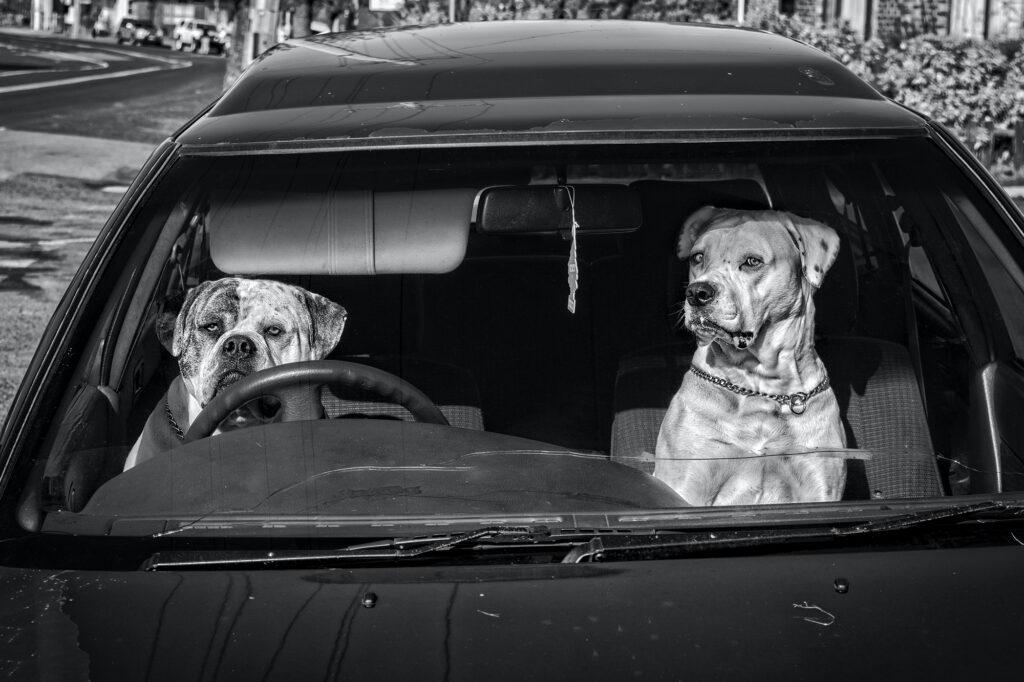
It is really alluring to drive with your small dog on your lap. They are adorable and enjoy cuddling. And what possible harm might your six-pound Maltese or Chihuahua cause by riding in your lap?
Your airbag is likely to deploy if you are in an accident. The airbag is designed to keep you safe in a collision. As the airbag inflates, if your small dog is sitting on your lap, the force of the airbag could seriously hurt it. Little dogs hit by an airbag frequently sustain fractures and spinal cord trauma that causes paralysis.
In a car accident, unrestrained dogs can potentially become projectiles. Being catapulted into the windshield and suffering a head injury is typical. Little dogs being catapulted out of the driver’s side window during an accident is another frequent occurrence seen by emergency vets. This occurs when the tiny dog is seated in the driver’s lap with their paws on the door and the driver’s window is down. In the event of an accident, the small dog may fly out the window and strike the pavement below, landing on its head. Traumatic brain injury or sudden deaths are frequent outcomes of this kind of injury.
The best way to transport a dog safely in a car is in a secured travel container made specifically for use in cars or airplanes, or harnessed into a dog car safety belt or harness. Tiny dogs can travel in a car seat made for dogs as long as they are restrained with a safety harness.
Big dogs frequently ride in the rear seat, away from air bags, but they still run the risk of getting hurt if a window is left open. As a result of flying objects, dogs who ride with their heads out the window are more likely to sustain eye and/or ear problems. Unrestrained dogs jumping out the window of a moving car are another frequent injury. When they fall on the pavement, these canines could break a limb. Also, owners have been known to mistakenly run their own dogs over after the animal jumped out the back window, according to emergency vets!
When the windows are rolled down in your automobile, installing a dog window guard or screen on each rear window can assist safeguard your dog. There are wire mesh panels made of welded steel that are specifically manufactured to fit your car’s rear windows. There are available screens made of polyester mesh cloth. When installed, each of these screens and panels enables regular window functioning in your car.
Accidents can occur when we least anticipate them. Don’t allow poor driving practices disrupt your outing!
You can always contact us about our Posh Dog Knee Brace or any other supplements for you dog by our contact page or visit our Facebook Page as well.
Hey guys, this is Nikki Lead Veterinary Technician with Posh Dog knee Braces. This is one of my most common questions asked will my dog need a knee brace forever for a CCL/ACL tear?, and I would like to dive deeper to answer this question, as there is more to the answer than simply No.

First off, the majority of my patients will use the posh dog knee brace for about 9 months, sometimes up to 12 months if they are a larger breed or have a minor meniscal tear. We know that scar tissue is mature by the 9-12 month point, and at the juvenile stage around month 2-3. If someone tells you that your dog will be permanently using the knee brace, they are simply misinformed. There are actually quite a few studies in both humans and animals, proving the timeline of scar tissue formation.
In surgical sites, or areas of soft tissue, scar tissue can form much faster, forming a thickened scar within weeks. This is different from the fibrous tissue that forms in a joint, and gives us regained stability. Let me ask you this, have you ever sprained your ankle or injured a joint?
Did you use a splint or a knee brace to help that joint recover? I know I have. Depending on the joint, and amount of muscle you were able to keep with physical therapy, also plays a key role in the longevity of using the brace. We do not want to keep the brace on forever, however, in some severe arthritis cases, or luxating patella issues, bracing longer term as needed may be necessary.
How do you know when it is time to take your dog out of the knee brace? Time will tell on this one. Most dogs are ready to go, and fully weight bearing by 9-12 months. However, if you were unable to complete the physical therapy recommendations during the recovery times, your dog may need longer in the brace while they acclimate slowly to walking without the brace on.
This needs to be a slow weaning process, so as not to cause a re-injury. Take your dog for a nice leash walk, without the brace. If you dog does great, and has no sign of a limp or gait that is off, then you can continue to leash walk without the brace for a bit longer until you feel comfortable letting your dog resume activites.
Some dogs may need a little longer than 12 months, such as patients with meniscal tears or arthritis, or if there was a re-injury during the healing process. This is still not forever, I would take things month by month until you are successful at walks without the brace on. Our service technicians are happy to answer any questions you may have about this process, and there is really not a wrong answer. If you feel more comfortable having your dog wear the brace longer, and your dog is doing great, that’s ok!
I would suggest our Posh led support group on Facebook, where you can talk with thousands of other clients who have all used the posh brace to recover. This is a great place to learn more about what to expect, and get great advice from both our technicians and previous customers.
To sum everything up, we do need to make sure to use the brace as directed for at least 9 months, but that is usually adequate for the majority of our clients. Please check out our website, poshdogkneebrace.com, for further tips and information that may also be very helpful, you can also reach out to our facebook page as well for information.
Dog Toys are not a luxury but rather an absolute necessity for dogs and other pets.
The well-being of your dog depends on its toys. When you must leave your dog at home, toys keep them entertained and reassure them when they’re anxious. Even the development of some negative behaviors in your dog can be delayed with the use of toys.
Dogs are frequently more than happy to play with whatever object they can get their paws on. To avoid any “unscheduled” activities, you will therefore need to monitor your dog’s playtime carefully.
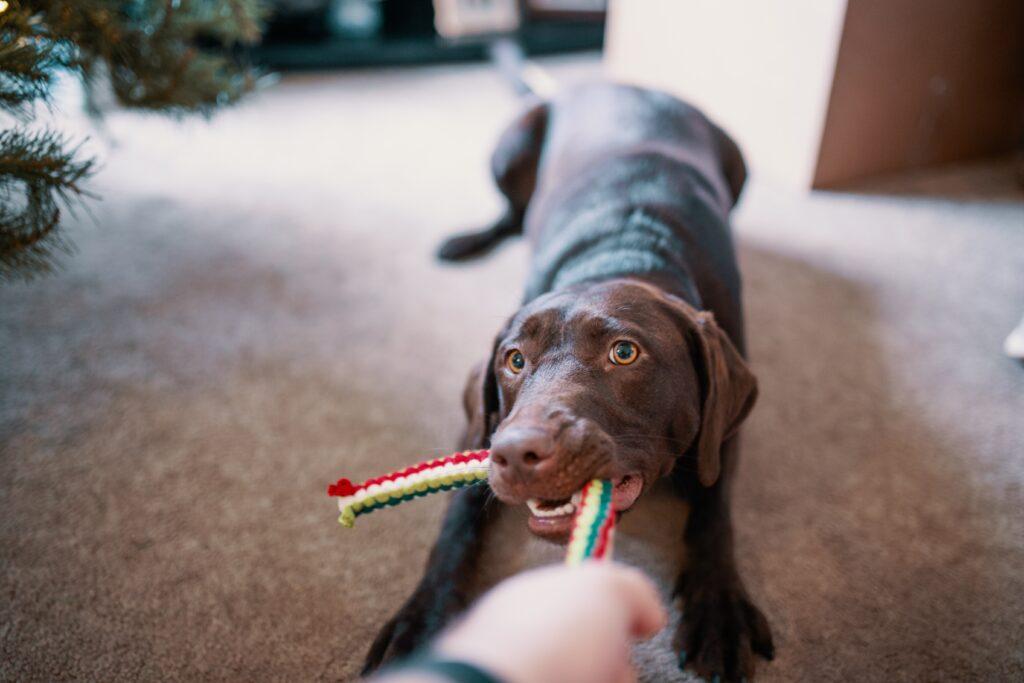
The size, activity level, and preferences of your dog all play a part in determining whether a dog toy is safe or dangerous. The environment in which your dog spends their time is another factor to take into account. The safety of any particular toy cannot be guaranteed, however we can provide the following recommendations.
Dogs typically find the most dangerous things to be the things that they find most appealing. Remove all strings, ribbons, rubber bands, children’s toys, pantyhose, and other potentially ingestible materials from your home to dog-proof it.
Make sure the dog toys you buy for your dog are the right size. Smaller toys run the risk of being ingested or getting stuck in your dog’s throat.
If you don’t watch your dog playing with squeaky toys, they can eat the squeaking object since they feel the need to find and destroy it.
Toys that aren’t “dog-proof” should be avoided or modified by taking out any ribbons, strings, eyeballs, or other pieces that could be chewed off and consumed. Dog Toys that are tearing or starting to shatter into pieces should be thrown away. Check the labels on plush animals to make sure they are suitable for children under three and don’t have any poisonous fillings. Nutshells and polystyrene beads are examples of problematic fillings, but even “safe” fillings aren’t actually digestible. Though certain soft dog toys are more durable than others, keep in mind that they are not invincible. Soft toys ought to be washable in the machine.
If you’re considering giving your dog a rawhide chew toy, make sure to ask your vet which ones are secure and suitable for your dog. Give these toys to your dog only when you can keep an eye on them as they may present choking concerns.
Rawhide is a byproduct of the brutal international fur trade in large quantities. Consider toys made of extremely firm rubber, which are safer and last longer, as a kinder substitute.
Industry insiders categorize dog toys into many categories since they are now so common and diversified. Here are five categories for toys:
Tennis balls are excellent fetching toys for dogs, but they don’t hold up well to chewing. Tennis balls that have been eaten through should be thrown away since they could choke your pet.
An old t-shirt, pillowcase, towel, or other piece of filthy laundry, especially one that smells like you, can be quite comforting to a dog. Be aware that diligent fluffing, transporting, and nosing may result in the item being.
Puppies develop the impulse to chew on everything between the ages of 12 weeks and 6 months as their baby teeth fall out and their adult teeth begin to erupt through their gums. Providing children with teething toys will increase their comfort and protect your hands, shoes, and furniture. Rubber toys and sturdy nylon bones can withstand weeks of chewing without shattering into fragments that could be ingested. You may purchase specialist puppy teething toys that can be frozen and have calming textures printed on them.
Only have a few toys available at once to ensure weekly toy rotation for your dog. Maintain a range of accessible kinds. You might want to keep a favorite toy for your dog out at all times if it is soft.
Give your dog toys that may be used in a variety of ways, including carrying, rolling, shaking, and comforting.
Toys that are “found” are frequently considerably more appealing than toys that are clearly introduced. Your dog will burn off excess energy by playing the game of “find the toy” or “find the treat” without the need for much space.
Your dog should have a lot of engaging toys. Because dogs want active “people time,” interactive play is crucial for strengthening the link between you and your pet. Toys that promote the attachment between a person and their pet include balls, flying discs, and other items.
Your dog can release pent-up mental and physical energy from boredom by concentrating on a particular task, such as continuously returning a ball, or Frisbee or playing “hide-and-seek” with treats or toys, in a constrained period of time and area. Interactive play provides a chance for socialization and teaches young, hyperactive, untrained dogs about proper and improper behavior, such as jumping up or being mouthy.
For more information you can each out to us via our contact form or visit our Facebook Page.
Read reviews check out our Google Reviews online. Click Here
Keep your pet off of Santa’s bad list right up until his arrival! It’s the holiday season!
It’s likely that your furry family member will be present to take part in the celebrations when everyone is gathered around the tree to open gifts and spread joy and laughter. However, your pet might find the ideal moment to cause some trouble while everyone is preoccupied with presenting gifts and playing with new toys.
Your tree is probably going to be the focal point of the celebrations this year, but it may also be a tremendous temptation for your dog! Make careful to hang the shiny tinsel, bright lights, and ornaments in the shape of tennis balls out of reach of your animal pets. Some mischievous dogs could still attempt to jump on the tree, so leaving something noisy, like crumpled aluminum foil or a bottle filled with tiny objects, can alert the dancer of imminent danger. Additionally, if you have a live tree, make sure to pick up all of the fallen needles since if consumed, they can cause serious stomach discomfort in your pet.
Your pet’s health and safety are at risk from holiday plants other than trees. Keep in mind that plants like holly, mistletoe, and poinsettias are harmful to dogs, so keep them out of reach!
It could be a good idea to inspect all electrical decorations, both indoors and outdoors. To prevent your furry pals from getting caught and creating a mess, tape the wires to the wall!
When it’s time to unwrap presents, be sure to have a garbage bag on hand to dispose of wrapping paper, twine, and tape as soon as they’re no longer required.
It might be wise to confine your pet to a comfortable area with access to water if you’re expecting a large number of guests, at least until the ruckus dies down. Before your guests arrive, you might want to review your dog’s obedience commands; we don’t want Grandma to trip over a huge, puppy hug! Additionally, it’s crucial to let your visitors know they shouldn’t give your pets any table food. You wouldn’t want your dog to eat too much and have to spend the rest of the holidays taking care of their stomach ache, even if some foods aren’t particularly dangerous to them.
The team at Posh Dog Knee Brace hopes that these simple reminders allow your pet to have fun with the family this holiday season! If you would like any information on our brace you can reach out to us via our contact form or visit our Facebook page.

Read reviews check out our Google Reviews online. Click Here